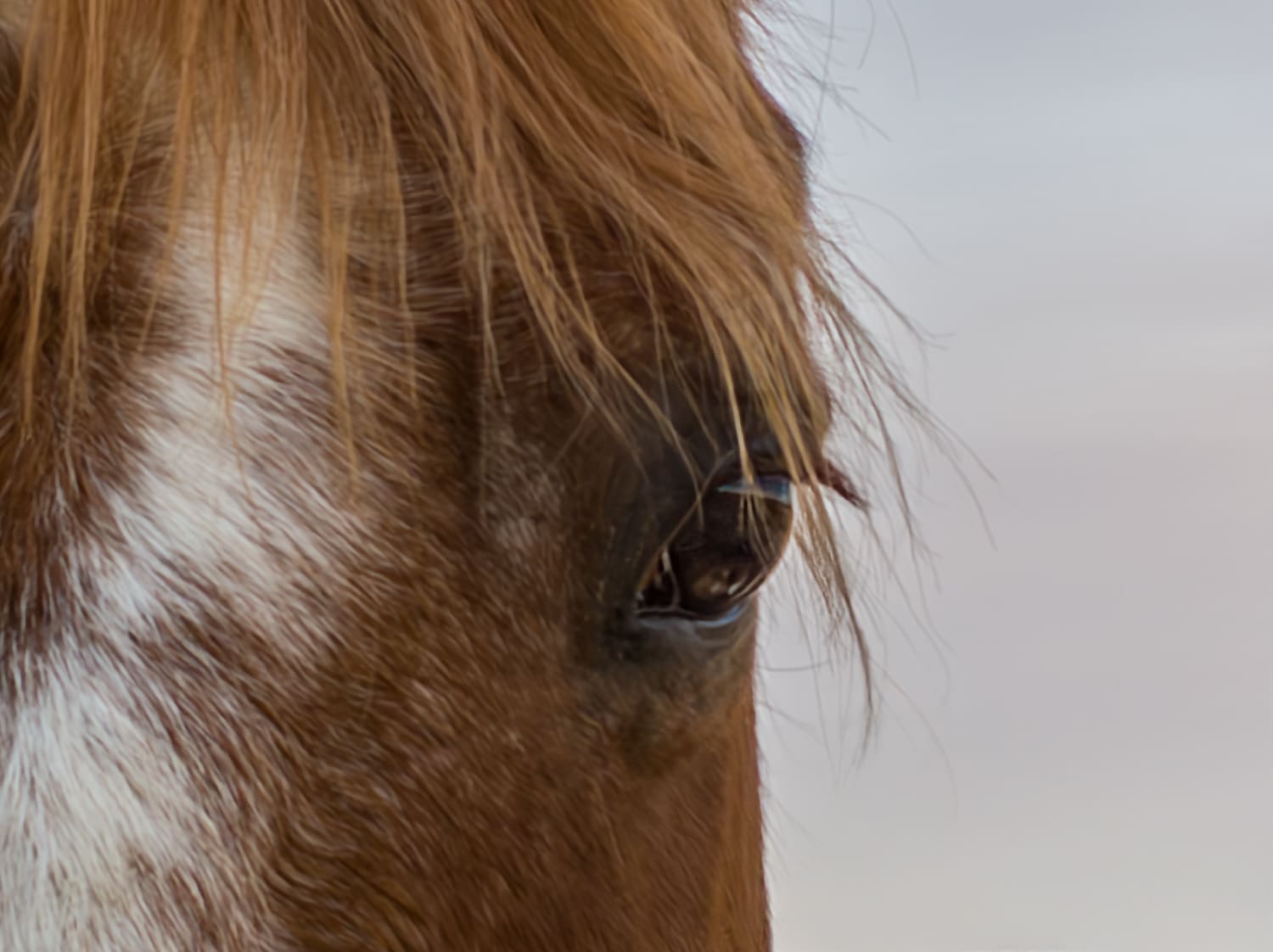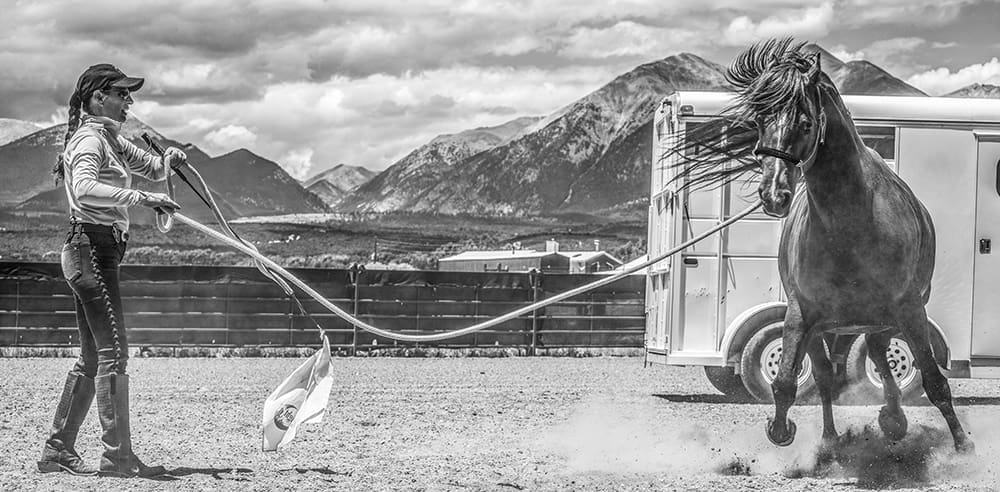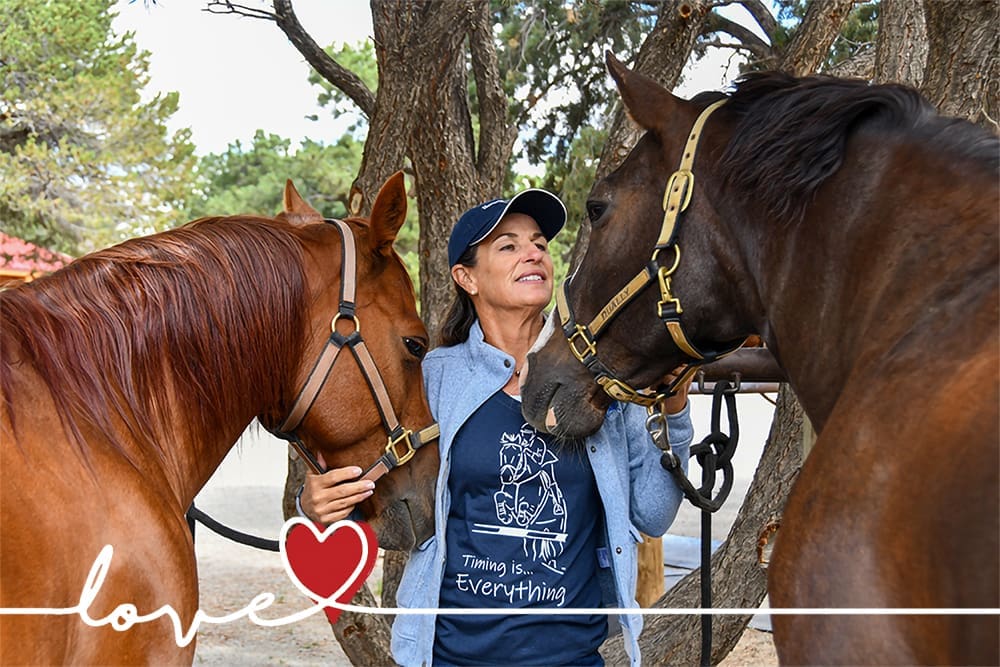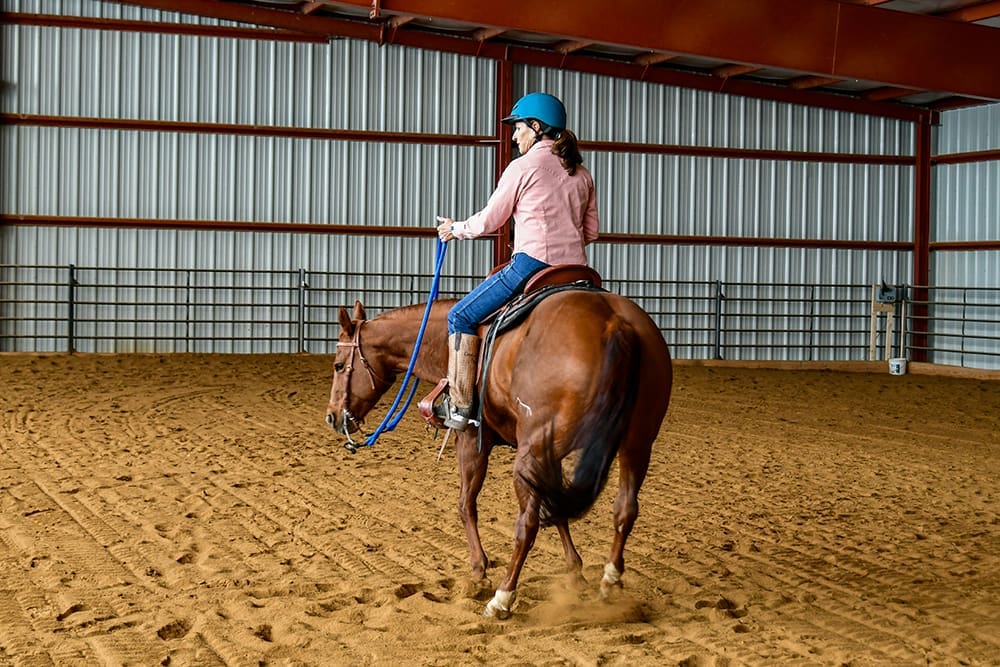Question Category: Riding Skills
Question: How can I make sure I ride with my stirrups at the correct length?
Answer: Appropriate stirrup length is critical for all levels and disciplines of riders. It is important for safety, for rider balance and for the effectiveness of the rider in developing correct riding skills. Time and time again in CHA clinics, we see riders participating in a lesson with stirrups mal-adjusted. Developing a keen instructor’s eye for knowing when the stirrup length is appropriately adjusted is a learned skill and one that clearly separates the lower and higher levels of instructor certification.
For starters, an instructor must know what the appropriate stirrup length is for the style of riding, or disciplines, such as English/Western, Dressage, Reining, Saddle seat, Cutting, Jumping, Roping, etc. One should know that Dressage and Saddle Seat are the longest lengths, while jumping is shortest. Roping is short, while other western disciplines need longer lengths.
Fortunately, there are some commonalities between all disciplines of riding that will help an instructor determine if the length is correct for the rider.
For balance, the rider must be able to sit comfortably in the balanced position of ear-shoulder-hip-heel alignment. If the stirrup is too long, no matter what discipline, the rider will have to reach with his toes for the stirrup and this will cause her to ride in the heel-up position. No matter what the discipline, when the heels are up, the rider is not balanced, anchored on the horse or able to use his leg aid to communicate effectively with the horse.
Check the stirrup length visually from both in front of the rider/horse (with his feet out of the stirrups and saddle square) and from the side, perpendicular to the horse.
Always check that the stirrup length is equal on both sides. Uneven stirrups are amazingly common. I usually clue into this problem when I find myself looking at a rider one moment, thinking his stirrups are correct and at another moment, thinking the stirrups are too long or too short. After a few times of this indecisiveness, it occurs to me that every time I reverse the riders, my opinion changes. So I bring the rider in off the rail and ask my assistant to have him square his saddle and then drop his stirrups, so my assistant can determine by looking from in front of the horse, if the rider’s stirrup length is level or not.
The stirrup length may need to be fudged one way or the other depending on the horse’s build. Awkward scenarios like a big person on a little horse or a little person on a big horse or a narrow person on a wide horse may have a bearing on which way you fudge the stirrup length.
My two favorite ways to judge by eyesight if the rider’s stirrup length is correct, are to 1) look at the angle of the rider’s leg between the thigh and lower leg, and 2) by comparing the angle of the rider’s thigh and the horse’s shoulder.
1. From the center of the ring, the angle of the rider’s leg, between the thigh and lower leg, should be an equal angle. If the angle of the leg is not equal, it usually means that the rider’s stirrup is too long and the lower leg is hanging straight down while the angle of the thigh is more or less at 45 degrees, making the angle unequal.
2. Looking from the center of the arena, the angle of the rider’s thigh should be more or less parallel with the angle of the horse’s shoulder (the line from mid-withers to point of shoulder). This handy eyeball check is helpful for insuring the best ride when the rider is mounted on a choppy horse. In general, the steeper the angle of the horse’s shoulder, the rougher the horse’s gait. When the horse is rough gaited, the rider needs a longer-than-normal stirrup length to help anchor the rider onto the horse’s back.
Conversely, if the angle of the rider’s thigh is high compared to the horse’s shoulder, it is easier for the rider to ride in a more forward position and get up off the horse’s back. This might be important for riding jumpers, racehorses or for roping.
There are a few measurements that I know of that you can use to guage appropriate stirrup length. One is to measure the stirrup length compared to the rider’s arm, from the ground. To do this, the rider puts his fingertips on the stirrup bar and pulls the stirrup into his armpit.
This gives you a ballpark figure on which to judge proper length; the length of the stirrup should be about the length of the rider’s arm. It is best not to mount the rider until the stirrups are at least in the ballpark of the correct length. The horse could turn into a thousand pound scared rabbit at any moment and if the rider must rely on the stirrups for balance (which most rider’s do) the feet should be in the stirrups. The stirrup length may still need some fine-tuning when this method of measuring length is used.
Another way to measure stirrup length, once the rider is up on the horse, is to have the rider hang his leg straight down and see where the bottom of the stirrup is in relation to the anklebone. If the stirrup hits right at the ankle bone is a good length for most riders. Once again, this will provide you with a ballpark figure, but fine-tuning of the length may still be in order.
Personally, I am not a fan of the third technique for measuring the rider’s stirrup length, although many instructors are. This measurement is taken by having the rider mount, then stand in his stirrups to see if you can fit your fist between the rider’s seat and the seat of the saddle. For one thing, it is not a great place to be putting your hand, in a place that it doesn’t belong.
The other problem with this technique is that unless and until the rider can properly stand in the stirrups, this measurement is useless. If the rider rises in the stirrup by pushing up off the stirrup, straightening the knee and lifting the heel (as most beginner through intermediate riders do), there will always be plenty of room between the crotch and saddle. Only when the rider uses correct rising technique and rolls onto his thighs while the leg and heel lengthens, will this measurement be accurate.
There is one way to judge stirrup length that is inappropriate and risky. That is to judge the stirrup length by the equipment. In other words, if the saddle is not the right size for the rider and the stirrups will not adjust to the correct length, you should not compromise the safety and comfort of the rider by letting him ride without stirrups. Again, think of the worst case scenario. While very advanced riders should be balanced enough on the horse to survive an upset, most beginner and intermediate riders are at a much greater risk of falling when riding without stirrups.
As you can see, there are many methods to judge the proper stirrup length for your students and there are many variables that affect the proper length, such as the rider’s build, the size and gait of the horse, the saddle and the activity the rider is participating in. It is less important which methods you use, and more important that you systematically make these assessments each and every time you put a rider up.
The time you take to evaluate your student’s stirrup length does not have to be lengthy; an experienced instructor can make these assessments, without missing a beat of the lesson. Once a rider is mounted, the instructor should be looking from all directions to determine if the stirrup length is correct. If you think an adjustment or a closer look at the length is needed, bring the rider in off the rail and ask an assistant to assess and fix the stirrup length.
If you do not have an assistant, you’ll have to perform this task while continuing to watch the other riders and simultaneously giving directions to both the riders on the rail and the rider you are fixing. This is a point in time when the instructor needs eyes in the back of her head and the ability to multi-task.
Here is a helpful hint for participants in a CHA Instructor Certification course. If you have mounted a lesson and have all the riders out on the rail at work, but you notice that a rider has an inappropriate stirrup length (for real or for role-playing), bring the rider in and ask your assistant to fix the problem. If the tack will not adjust, stipulate to the clinic instructors that in “real life” you would have an assistant get another saddle, rather than compromise the rider’s experience. During the CHA clinic, for the sake of time, the equipment may not be changed, but the clinic instructors will be aware of your knowledge and adherence to standards. If you let an unfixable problem go on during your lesson without stipulating that you would fix it, the clinic instructors can only assume that you did not know it was risky or ineffective to continue under such circumstances.
The moral of the story when it comes to judging stirrup length is to know what you are checking, know how to check it and to check it systematically every time you mount a rider. The more you teach, the better you’ll get at seeing it.
Copyright ©Julie Goodnight 2000. All Rights Reserved. No part of this website may be reproduced without owner’s express consent.



